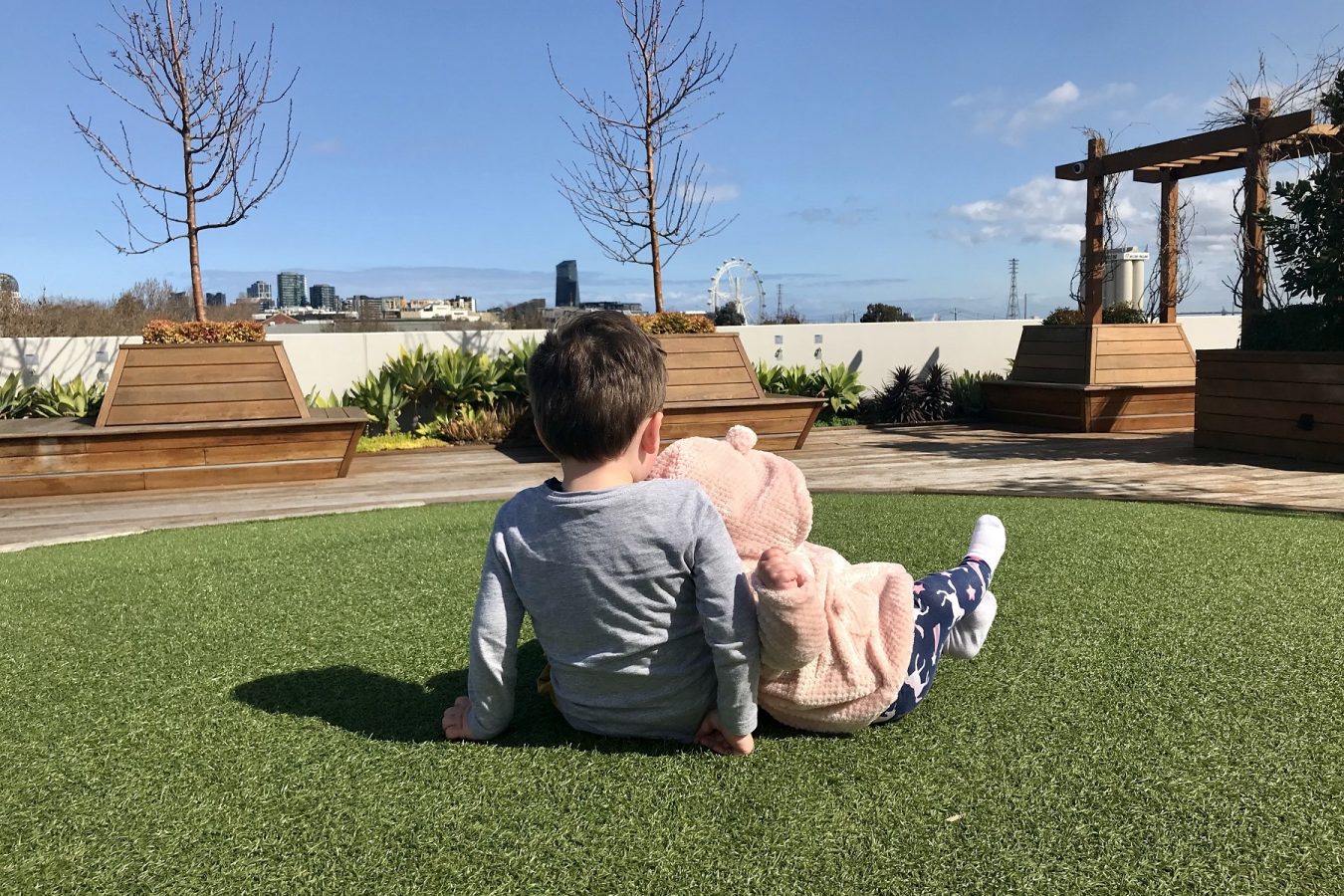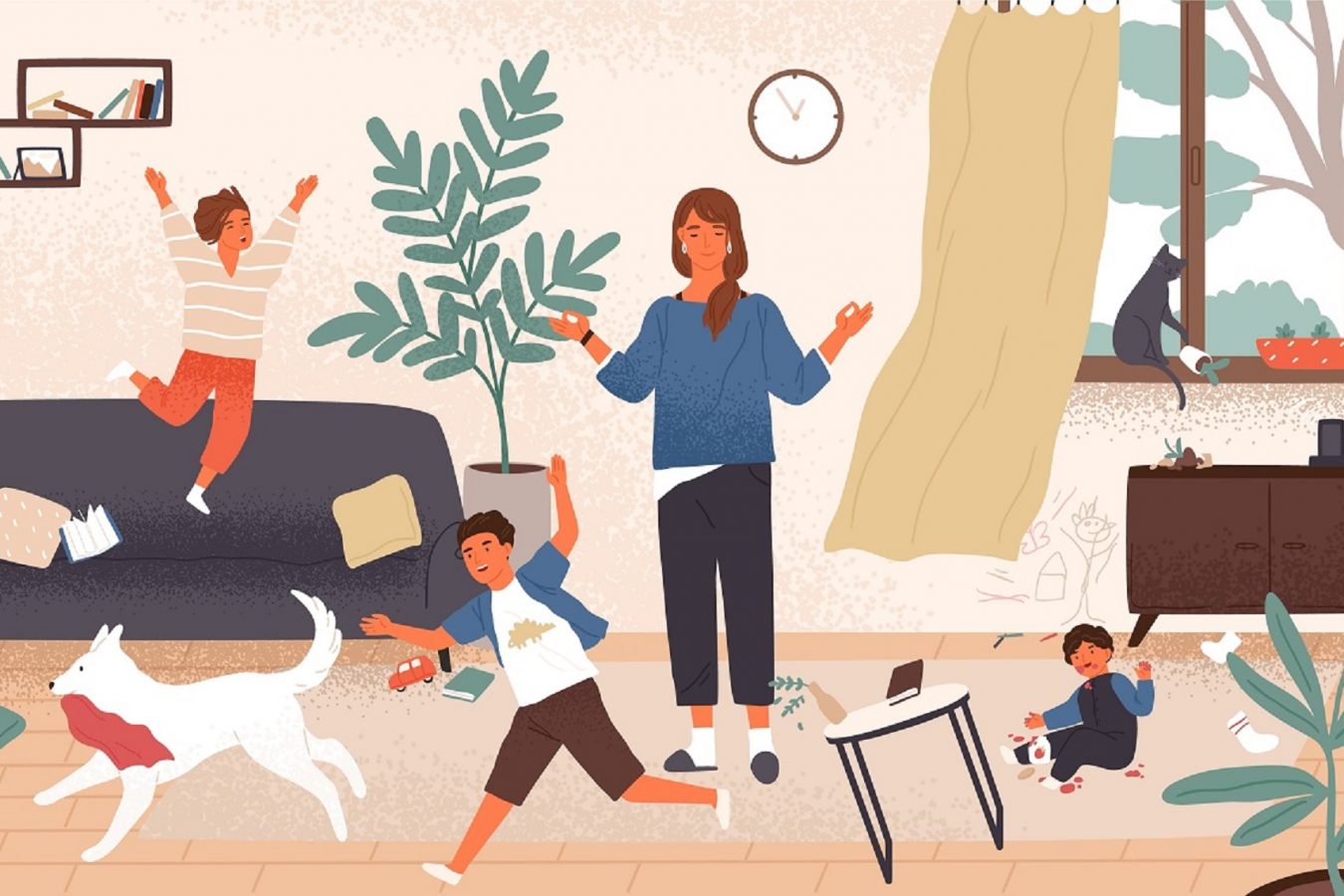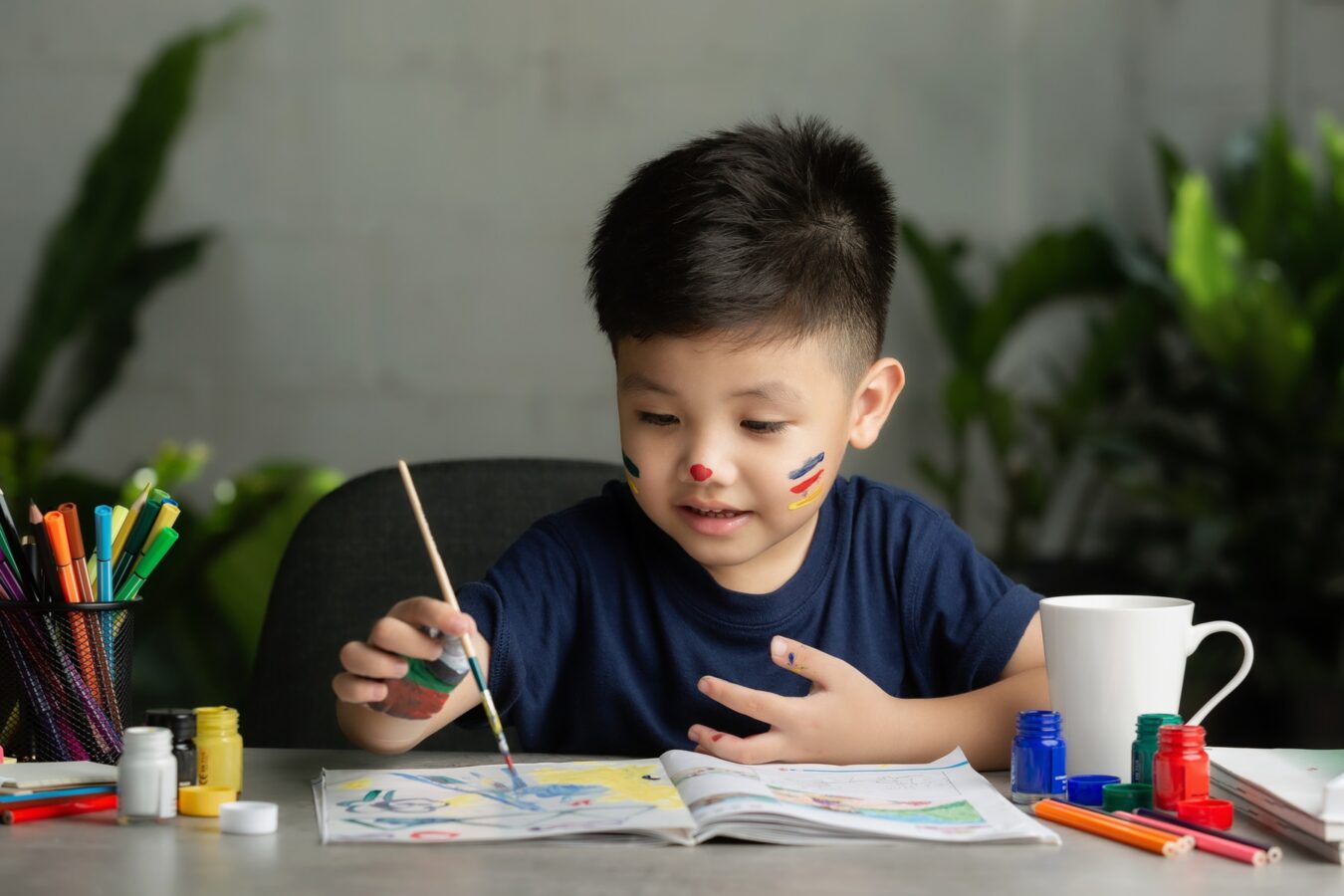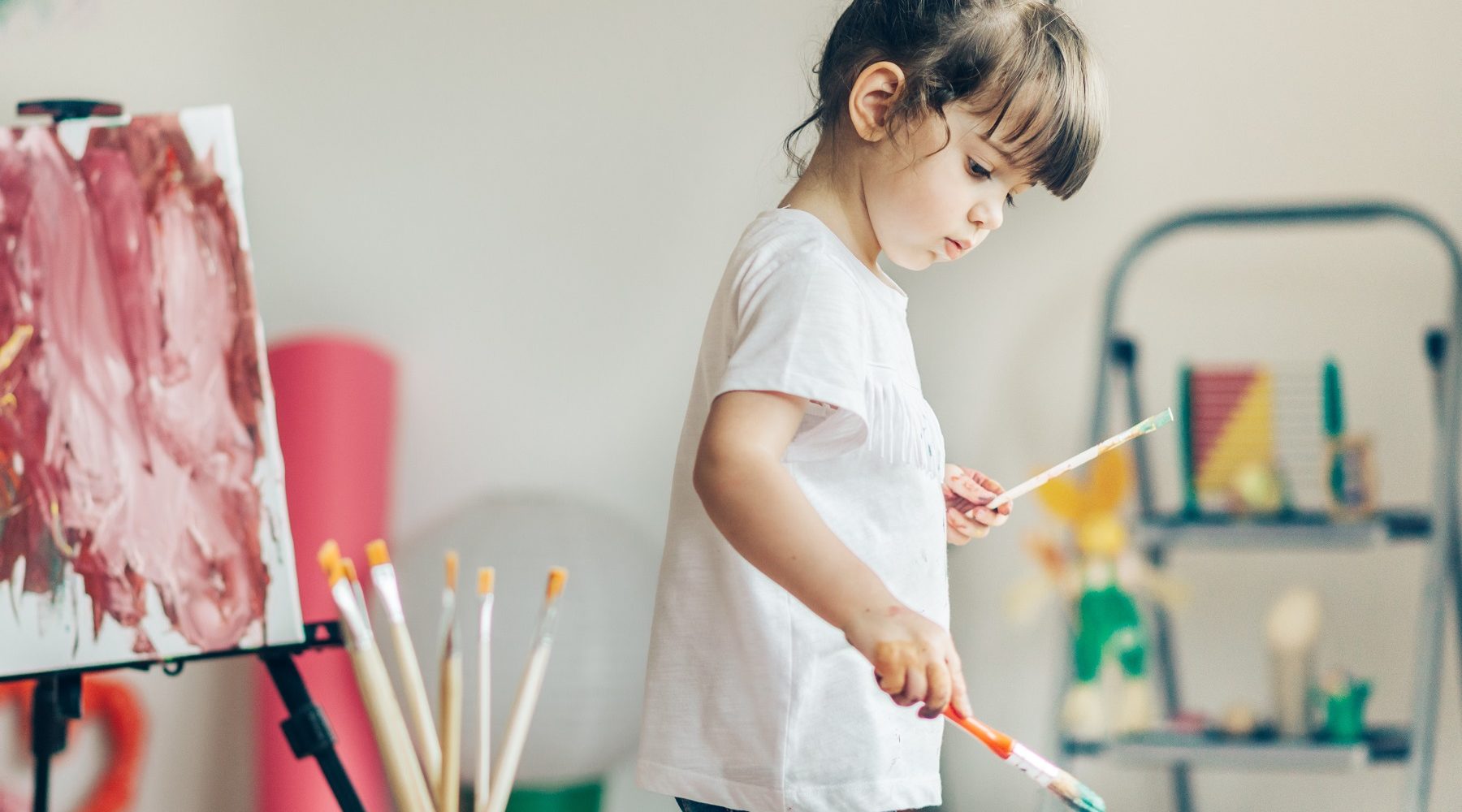
Wondering how to keep your little ones busy and entertained during lockdown? Here are some great practical and education-based ideas from Svitlana Korchova-Tyurina and Katrina Tour.
Due to Victoria’s stage 4 restrictions, many children cannot attend childcare centres, family day care services and kinder programs.This leaves many parents concerned about being able to ‘entertain’ and ‘keep kids busy’ – not only to manage work-from-home arrangements but also to provide stimulating learning experiences for young children.
This article offers five ideas that every parent can use to organise such experiences at home.
They are low-cost and affordable for every family. They are informed by the principles of the Early Year Learning Framework and current research but they do not require much preparation and training. They are centred on free-play, creativity and sustainability.
While these ideas are mainly aimed at pre-school children, they can be also adapted for a junior primary age group:
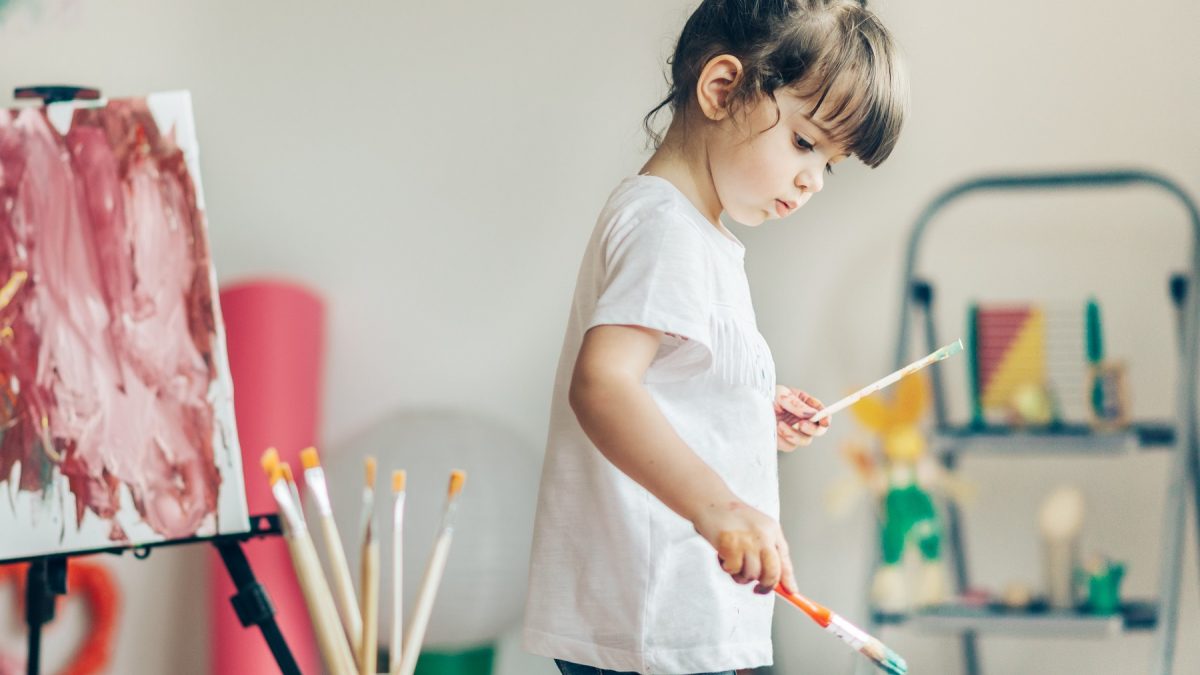
1. Learning-through-play stations
Set up specific areas, or what we call ‘learn-through-play stations’, in different parts of your house, keeping in mind two important ideas: first, open-ended resources, and second, free play. Each station should have its own set of open-ended resources for free play.
This means that resources should encourage children to make their own decisions about how to play with them and learn through this experience. For young children, play does not come after learning; play is learning.
One such station can be a zone where children can be active and engage in physical play such as dancing, running, jumping, stretching, throwing and kicking.
The resources for this station can include mats, plastic balls for throwing, gym balls, tunnels, balancing beams, boxes of varying sizes, covers, elastic materials, pillows, crash pillows (you can fill a quilt cover with plastic pit balls) and an inside trampoline.
Children only need a small amount of toys so provide a few items. Keep the majority of them out of children’s sight and alternate what is available in this zone.
Another station in a different corner of the house can be organised around sensory experiences to engage children’s touch, smell, sight, taste, hearing, movement and balance. This can be a small table or a box with some sensory resources to develop fine motor skills and act as relaxing techniques: kinetic sand, sensory bottles, leaves, sticks, rocks, feathers, mirrors.
A creative station can be set up for drawing, painting, pasting, dancing and music explorations. Ideally, it needs to include different drawing and painting surfaces: horizontal (tables, floors, decking), vertical (easels, small plastic mirrors, boxes), textured (blackboards, white and black paper, board paper).
Other important resources for this station include brushes, sticks, cotton buds, leaves, stamps as well as gear for finger and/or palm painting.
You can also set up an inviting reading space in your house.This communicative/linguistic zone is especially important for the development of children’s interest in books, love for reading and emergent literacy skills.
This station should be set up separately from zones for active play. It needs to be quiet and comfortable. Sofas, beanbags, cushions or a small portable tent can help to create a relaxing environment.
Open-ended resources can include books, audio books, sticker books, stuffed toys or a torch. They will act as both peaceful breaks and creative stimuli.
Another stimulating station that every child will enjoy is a puppet show theatre. This activity is very generative for enhancing all areas of children’s development: physical (e.g. fine motor skills, hand-eye coordination), linguistic, social, emotional and creative.
A cardboard box, crepe paper and a piece of fabric are all you need to create a DIY stage. The puppets can be made of socks, spoons or sticks. Real puppets work just as well. Don’t forget a space for the audience: several chairs or cushions to sit on.
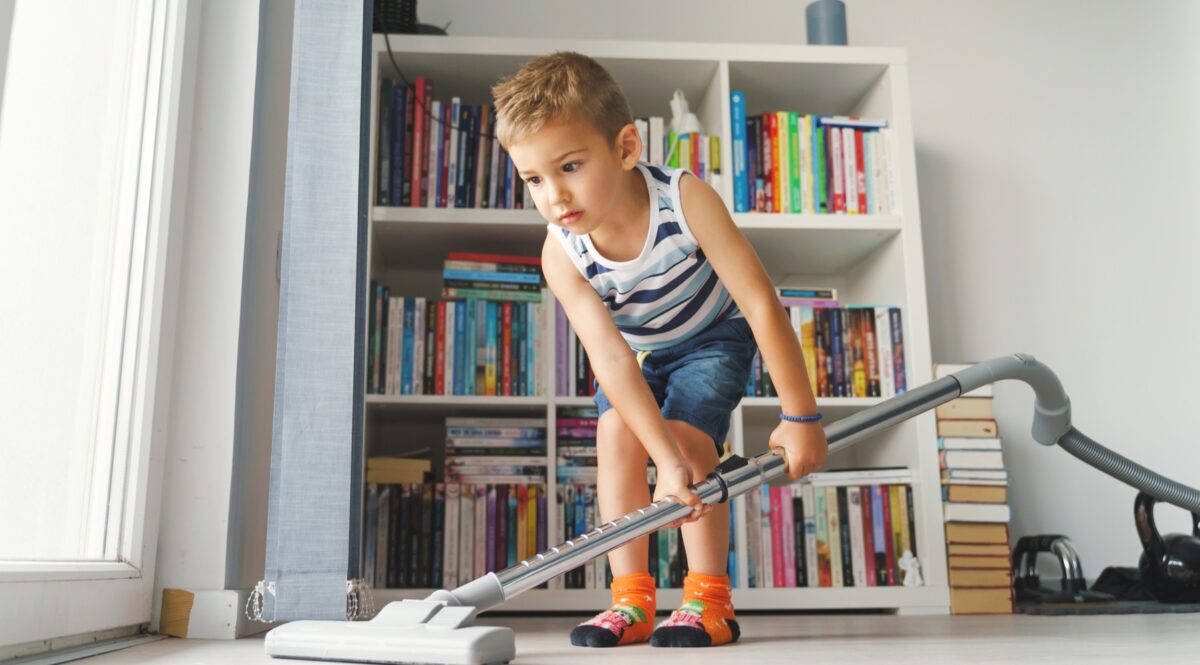
2. Parents’ little helpers
Another way to keep your children busy and help them feel valued is to involve them in your household routines. Whatever you do, ask your child to become your ‘little helper’: cleaning, cooking, washing, sweeping, loading/unloading washing machines, folding clothes or setting up a dinner table.
So called ‘heavy-work sensory activities’ are be especially valuable as they will not only help to socialise children through housework responsibilities but also help children to self-regulate their behaviour. The list of heavy-work activities includes, but is not limited to:
- Pulling or pushing a full linen basket
- Vacuuming
- Mopping the floor
- Mowing the lawn
- Loading/unloading and carrying groceries
- Carrying beanbags, a pile of books, a bucket of water/sand
- Squishing and kneading dough
- Taking out the garbage
- Cleaning windows
- Dusting the furniture
However, research suggests that the learning of housework is a gendered process, which means that children tend to follow traditional gender roles and engage in housework just like their parents. As this may lead to the reproduction of gender inequalities, it is important to engage children in a wide range of chores regardless of their gender.
3. Celebrations every day
Lockdowns are hard physically, socially and emotionally. That’s why it is especially important to give extra attention to the good things in life. There are no limits to what families can celebrate every day during lockdown just to feel a bit different.
The house can be decorated with paper banners, lights and candles. Family members can dress up, change their hairstyle or wear perfume. Even something as simple as lighting a campfire together gives an impression of exciting difference: things look, smell, and feel different at night around a crackling fire.
4. Digital experts
It has been reported that the amount of screen time increased in Australian households in the lockdown. While some argue that what children are doing with technology matters more than how much time they spend with devices, many parents may still want to see less screen time, especially with young children.
However, technology can still be a part of a free play and exploration. Do you have an old headset, keyboards, microphones, camera or phone? These resources can become a stimulating catalyst of children’s pretend play. Importantly, they provide opportunities for learning about technology and developing digital literacies without actual screen time that worries many parents.
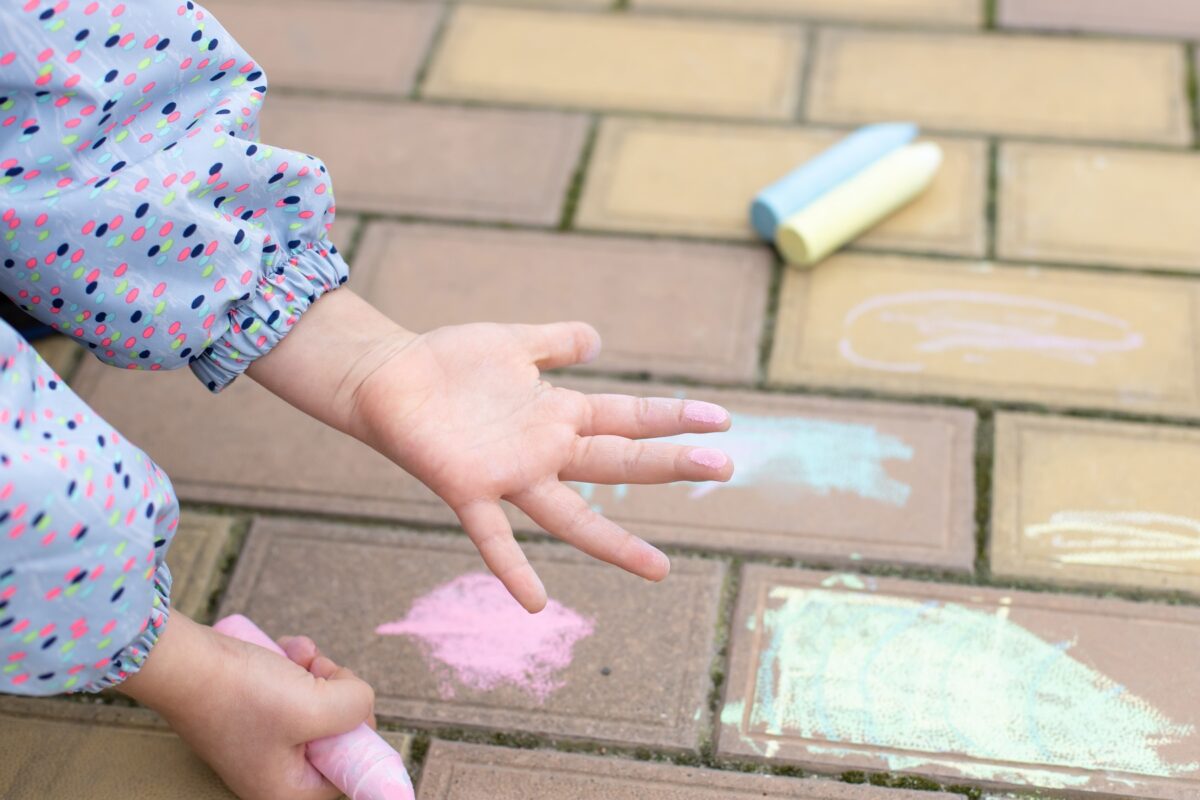
Creative backyards
You probably have some typical kids’ things in your backyard: a scooter, a trampoline, balls and a sandpit. To offer something new, you can bring one or two logs, big rocks or stumps for climbing, balancing and stepping.
You can also set up a water play table or a mud kitchen. Backyards can also give a new spin to many inside activities. Outdoor environments are bigger, allow your child to exercise far more autonomy in the process of play and offer a new perspective.
If you put an easel, paints and chalk outside, your backyard will transform into an artist’s workshop, offering an absolutely different experience as compared to indoor painting. Remember that painting does not have to be limited to a piece of paper or a canvas. You can encourage painting old boxes or even your fence and walls with water!
If you have magnifying glasses or clipboards and pens, you can encourage children to observe, explore, investigate, compare and describe different things around your garden like curious little magpies.
These activities will enhance their emerging scientific skills. If you switch music on, provide some elastic materials, ribbons and scarves, your backyard becomes a concert hall, a theatre or a circus, full of endless performance possibilities!
The most important principle of all these ideas is re-organisation of play spaces (not renovation) and a creative use of what you already have in the house (not buying more things). Ensure that that a child’s immersion in a play space does not pose any danger – and have fun!
Like this post? Please share using the buttons on this page.
About the authors
Svitlana Korchova-Tyurina is an Early Childhood Consultant, and Katrina Tour is a Lecturer at Monash University.
Subscribe to The Parents Website